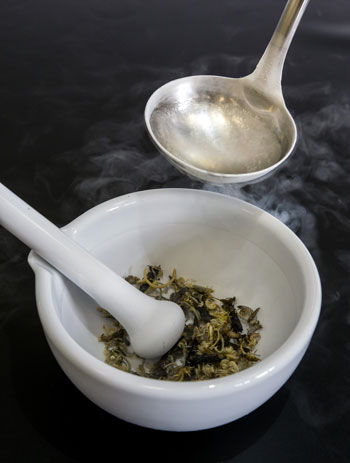| Jul 09, 2015 |
Assessing quality of flowing waters with DNA analyses
|
|
(Nanowerk News) The quality of waters can be assessed using of the organisms occurring therein. This approach often results in errors, because many species look alike. Therefore, new methods focus on DNA analyses instead. Biologists at the Ruhr-Universität Bochum (RUB) have optimised the process so that they are now able to identify many organisms at once in a quick and reliable manner using short DNA sequences. The results have been published in PLOS ONE ("Can DNA-Based Ecosystem Assessments Quantify Species Abundance? Testing Primer Bias and Biomass—Sequence Relationships with an Innovative Metabarcoding Protocol").
|
 |
| DNA metabarcoding: for the purpose of the analysis, all water organisms are macerated with liquid nitrogen in order to access the DNA. (Photo: Vasco Elbrecht)
|
|
Expert knowledge for species identification threatens to disappear
|
|
Industry, agriculture and human settlement put a strain on bodies of water; some organisms cannot survive due to the changing conditions in streams and rivers. Accordingly, their existence sheds light on the quality of the habitat. However, the number of experts able to identify the small animals on the basis of their appearance is in decline; only a few junior researchers are active in this field. RUB researchers from the Department Animal Ecology, Evolution and Biodiversity help preserve expert knowledge.
|
|
Database with "DNA barcodes"
|
|
For this purpose, they are creating a database in collaboration with the "German Barcode of Life Project": in the first step, qualified experts identify the water organisms based on their appearance. Subsequently, a short characteristic segment of the animals' genome – i.e. the barcode – is decoded and fed into the database. Someone who wishes to find out which species are represented in a body of water, takes a water sample, sequences the DNA of the organisms contained therein and matches it against the database. Vasco Elbrecht and Dr Florian Leese have developed an innovative lab protocol which renders this so-called DNA barcoding much faster than hitherto. They are able to identify more than thousand animals within a week after taking the sample. Even now in the development stage, the method identifies more than 80 per cent of the species correctly. It is thus more reliable than species identification based on external characteristics, and the biologists from Bochum are convinced that they will optimise the quota in the near future.
|
|
Assessment systems have to be adjusted to the new method
|
|
In their study, the Bochum-based biologists have also demonstrated the limitations of DNA barcoding. Using this method, it cannot be determined how many individuals of a certain species can be found in a body of water. The established assessment criteria for water quality, on the other hand, do include such data. "This is a problem for available assessment systems," says Florian Leese. "However, running waters are very dynamic; the frequency of species varies strongly for natural reasons over time. Therefore, it makes sense to record the quality based on conclusive species lists, without focusing too much on frequency.”
|

